It’s another sign of just how much is changing at the top of the sport, and just how much professional sailors are having to alter their priorities. Swedish challenger Artemis has been the first to officially throw its hat into the ring as a challenger for the next America’s Cup. This is a serious campaign, with a rumoured budget of €100 million. Businessman Torbjorn Tornqvist has signed up Paul Cayard as his front man and Terry Hutchinson as the helmsman.
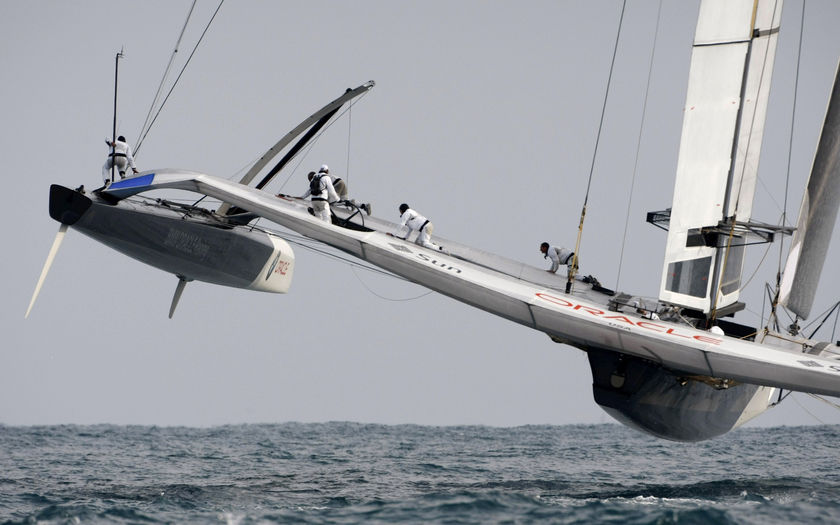
BMW Oracle heads for the finish line. © Dani Cardona
If ever there was a sign that the America’s Cup is transitioning from one era into another, it’s that Artemis split itself into two during mid-November. One part of the team went to Dubai to represent the Swedish challenge at the final movie Vuitton Cup trophy, while Hutchinson and another part of the team went to Key Biscayne in Florida to be taught how to sail and race Extreme 40 catamarans.
In his early 40s, keelboat specialist Hutchinson is no spring chicken, but he’s setting out to prove that you can teach an old dog new tricks, and this old dog wants to learn all he can about modern cats. "Five hours a day on one of these boats is much different and more difficult than anything we are used to,” reported an exhausted Hutchinson after a typically gruelling training day. “We are all whipped, and though it is a lot of work it is great fun too."
Artemis have employed two leading lights from the Extreme 40 circuit, British professional sailors Mark Bulkeley and David Carr, to teach Hutchinson and his keelboat veterans how to get the best out of lightweight planing catamarans. It does beg the question why America’s Cup teams are looking to retrain their existing personnel as opposed to hiring the established best in that particular discipline, but Paul Cayard explains that they are following the trend set by BMW Oracle and the way they won the last America’s Cup.
“What appears was born out from their experience was that fairly quickly on the America’s Cup world superseded the multihull world,” explains Cayard. “The multihull world largely is an offshore world, and that is from design to construction to the sailing. So I think the answer is that it is easier to take America’s Cup sailors and teach them the idiosyncrasies of multihull sailing than to go the other way around.”
Meanwhile in Dubai, six teams are bidding farewell to the ACC boats which have been used in America’s Cup competition for the past 20 years. This final Louis Vuitton Trophy is most likely to be the last time we see these boats raced in top-flight competition. To borrow from Russell Coutts’s now infamous comment about the Flintstones and Facebook generations, these boats do look very Flintstones. But then again, as veteran yachting journalist and America’s Cup historian Bob Fisher notes: “As from Monday, November 8th, Her Majesty Queen Elizabeth II has a Facebook page. So, exactly what is the Facebook Generation?”

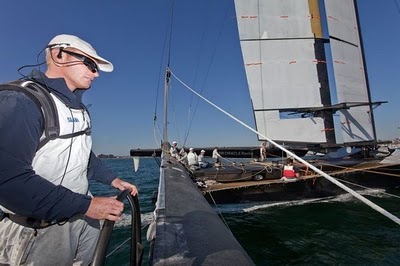 It was only last February, just a few days after BMW Oracle Racing won the America’s Cup when the mayor of San Francisco, Gavin Newsom, handed the keys to the city to one of its most famous inhabitants, Larry Ellison. Ellison returned the favour by giving Newsom a team jacket. All seemed sweetness and light between the new holders of the America’s Cup and the city of San Francisco...
It was only last February, just a few days after BMW Oracle Racing won the America’s Cup when the mayor of San Francisco, Gavin Newsom, handed the keys to the city to one of its most famous inhabitants, Larry Ellison. Ellison returned the favour by giving Newsom a team jacket. All seemed sweetness and light between the new holders of the America’s Cup and the city of San Francisco...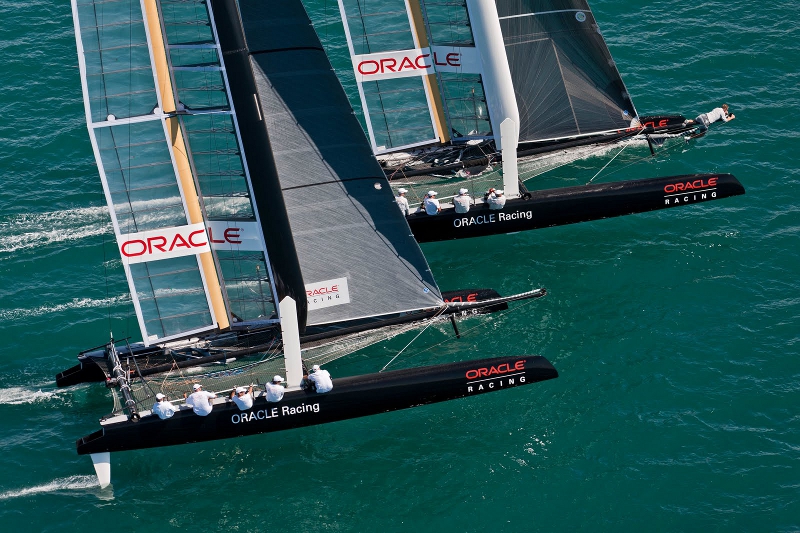 The new vision for the America’s Cup laid out by Russell Coutts is certainly different. For some, it has proven too different. First casualty after the announcement of wing-masted 72-foot catamarans racing in 2013 (venue yet to be determined) was Team Origin. After spending millions simply navigating his team through the past three directionless years of America’s Cup limbo, Sir Keith Mills has pulled the plug on the campaign just as the fog starts to clear...
The new vision for the America’s Cup laid out by Russell Coutts is certainly different. For some, it has proven too different. First casualty after the announcement of wing-masted 72-foot catamarans racing in 2013 (venue yet to be determined) was Team Origin. After spending millions simply navigating his team through the past three directionless years of America’s Cup limbo, Sir Keith Mills has pulled the plug on the campaign just as the fog starts to clear...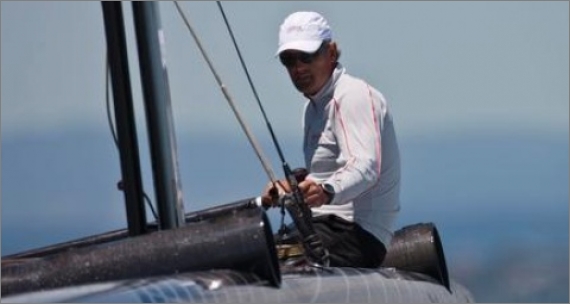 Russell Coutts has upset the applecart with his radical announcement that 72-foot catamarans will be the weapon of choice for the 34th America’s Cup. Not only that, but he’s talking about wing-masted catamarans. Sound familiar? It was a wing mast that powered BMW Oracle Racing’s trimaran to victory last February in Valencia...
Russell Coutts has upset the applecart with his radical announcement that 72-foot catamarans will be the weapon of choice for the 34th America’s Cup. Not only that, but he’s talking about wing-masted catamarans. Sound familiar? It was a wing mast that powered BMW Oracle Racing’s trimaran to victory last February in Valencia...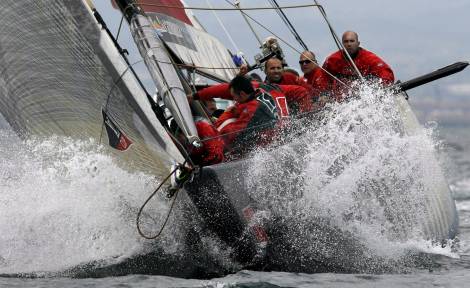 All eyes were on Team Origin at the start of the Louis Vuitton Trophy in La Maddalena, the sparse but ruggedly beautiful island off the northern coast of Sardinia. Just days earlier, team director Mike ‘Moose’ Sanderson was fired by Sir Keith Mills. It was a terse press release that announced the New Zealander’s departure, and none sounded more surprised than Sanderson himself...
All eyes were on Team Origin at the start of the Louis Vuitton Trophy in La Maddalena, the sparse but ruggedly beautiful island off the northern coast of Sardinia. Just days earlier, team director Mike ‘Moose’ Sanderson was fired by Sir Keith Mills. It was a terse press release that announced the New Zealander’s departure, and none sounded more surprised than Sanderson himself...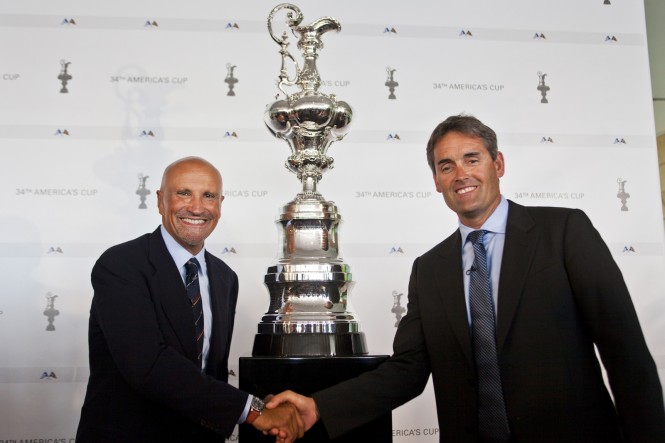 In Britain we’ve spent the last few weeks getting used to the idea of two rival political leaders putting aside their tribal enmities to form a coalition government. In the world of the America’s Cup, Sir Russell Coutts and Vincenzo Onorato are the David Cameron/Nick Clegg combo looking to straighten out a sporting event which they view as being in need of salvation after seven years of abuse by Alinghi...
In Britain we’ve spent the last few weeks getting used to the idea of two rival political leaders putting aside their tribal enmities to form a coalition government. In the world of the America’s Cup, Sir Russell Coutts and Vincenzo Onorato are the David Cameron/Nick Clegg combo looking to straighten out a sporting event which they view as being in need of salvation after seven years of abuse by Alinghi...